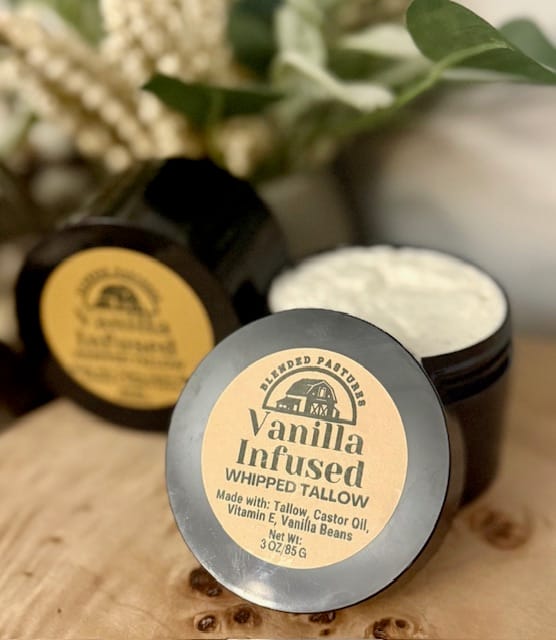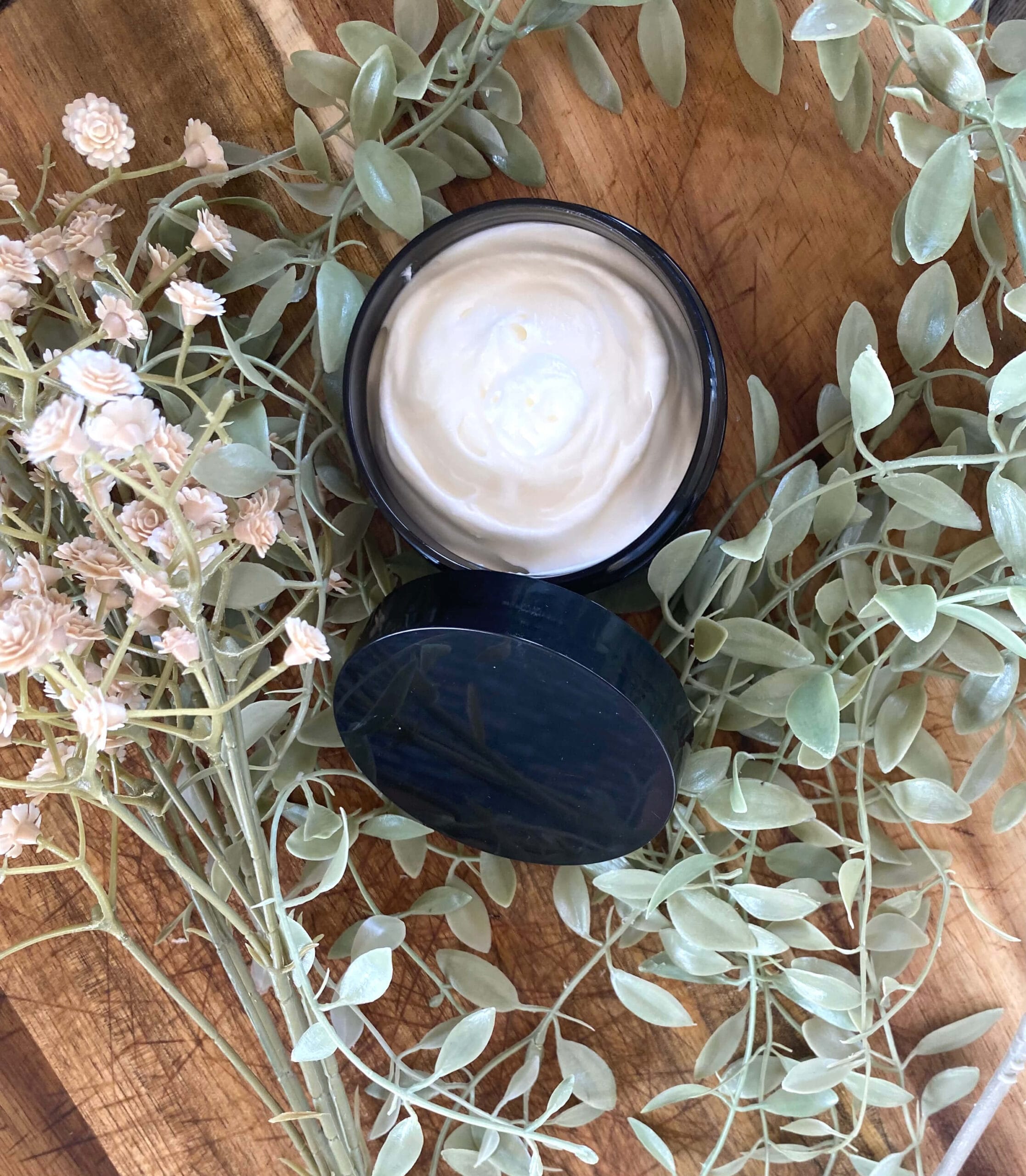Your skin and tallow share remarkably similar molecular structures, particularly in their fatty acid composition. Both contain palmitic, stearic, and oleic acids in comparable ratios, which allows tallow to naturally integrate with your skin cells. When applied, tallow's matching lipid profile helps it penetrate deeply and restore your skin's protective barrier. This natural alignment explains why tallow-based products work so effectively, especially when sourced from grass-fed animals. The science behind this compatibility goes even deeper.
Highlights
- Tallow contains identical fatty acids found in human skin cells, particularly palmitic, stearic, and oleic acids.
- The molecular structure of tallow closely matches human cell membranes, enabling seamless integration with skin tissue.
- Tallow's lipid composition mirrors the natural makeup of skin cells, allowing for effective nutrient absorption and delivery.
- Tallow melts at body temperature, allowing its fatty acids to align perfectly with cell membrane structures.
- The similar fatty acid ratios between tallow and skin cells enable natural barrier repair and cellular restoration.
The Chemical Composition of Tallow and Human Skin
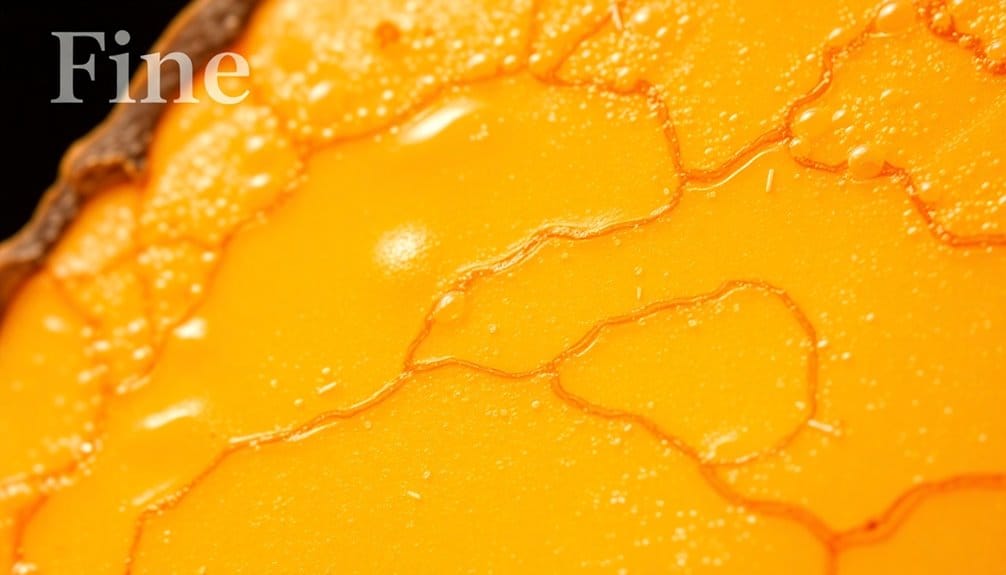
When you examine tallow at a molecular level, you'll find it's remarkably similar to human skin cells. This natural compatibility explains why your skin responds so well to tallow-based products. The core tallow properties include saturated fats, vitamins A, D, E, and K, along with crucial fatty acids that mirror your skin's natural makeup.
You're probably wondering why this matters. Well, your skin's cellular membrane consists of fatty acids that are nearly identical to those found in tallow. This fascinating skin compatibility means your body recognizes and readily absorbs tallow's nutrients. Think of it as speaking your skin's language – when you apply tallow-based products, you're fundamentally giving your skin exactly what it naturally creates and craves.
Understanding Fatty Acid Similarities
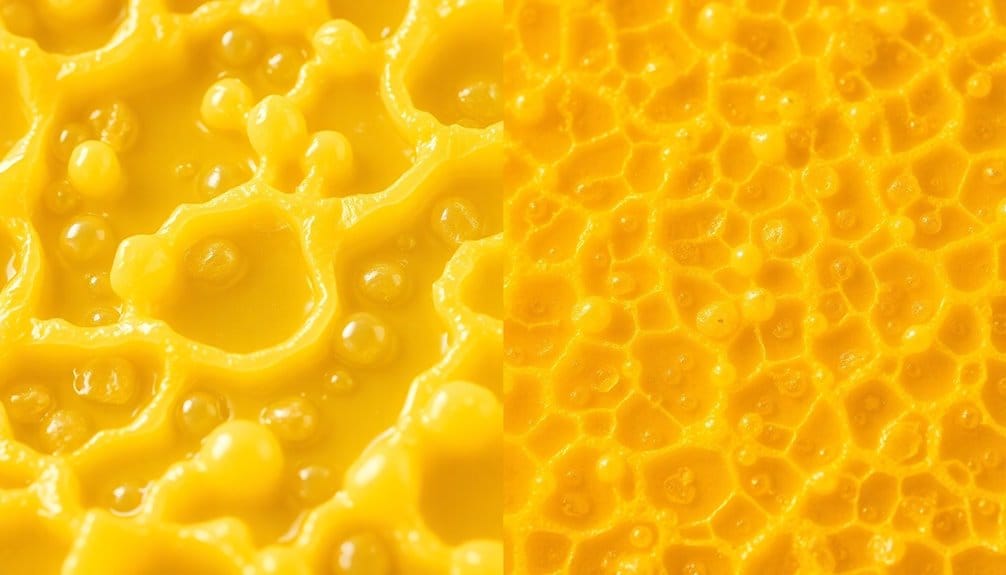
Although fatty acids come in countless varieties, you'll find that tallow and human skin share three essential types: palmitic, stearic, and oleic acids. When you compare their fatty acid profiles, you'll notice that both contain roughly similar proportions of these compounds.
You might be surprised to learn that different tallow sources can match human skin composition even more closely. For example, grass-fed beef tallow tends to mirror human fatty acid ratios better than grain-fed sources. That's why your skin often responds so well to tallow-based products – it's recognizing something familiar. Think of it as speaking your skin's natural language, where these matching fatty acids help restore and maintain your skin's protective barrier just like your body's own natural compounds do.
Cellular Absorption and Penetration Mechanisms
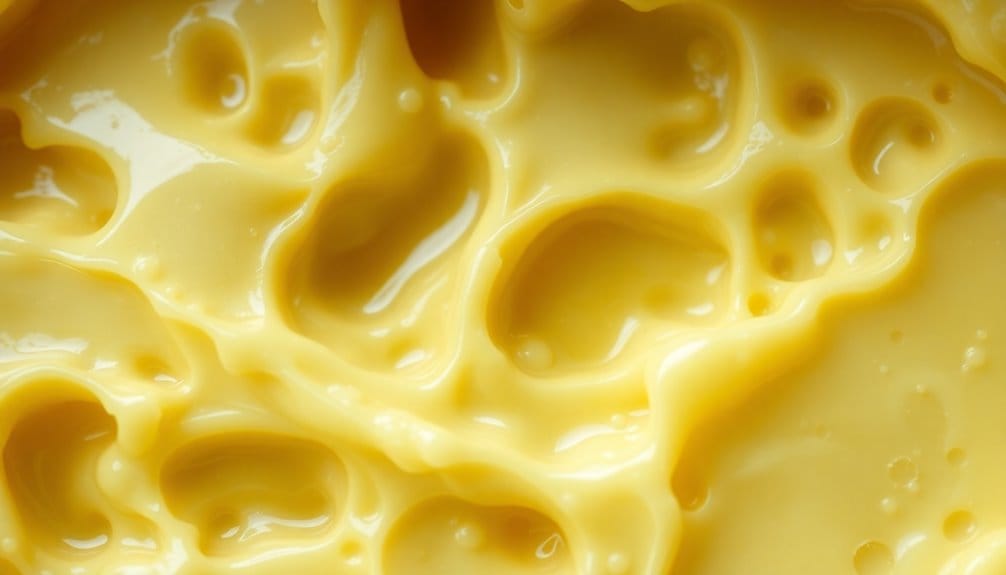
Because tallow's fatty acid structure closely matches human cell membranes, it's able to penetrate deeply into your skin's layers. When you apply tallow, you're giving your skin cells exactly what they need for ideal nutrient delivery. The process works like a key fitting perfectly into a lock.
| Process Stage | What's Happening |
|---|---|
| Initial Contact | Tallow melts at skin temperature |
| Surface Absorption | Fatty acids align with cell membrane |
| Deep Penetration | Nutrients pass through cell walls |
| Distribution | Active compounds spread between cells |
| Integration | Cells incorporate beneficial compounds |
You'll notice how quickly tallow absorbs compared to synthetic moisturizers. That's because your cells recognize it as a natural, compatible substance rather than a foreign molecule they need to process differently.
The Role of Lipids in Skin Barrier Function
Since your skin's protective barrier relies heavily on lipids, you'll want to understand how these natural fats work to keep you healthy. Your skin's multiple lipid layers work together like brick and mortar, creating a protective shield that locks in moisture and blocks harmful substances.
Think of your skin's barrier integrity as your body's first line of defense. When you maintain healthy lipid levels, you're supporting a complex system that includes ceramides, cholesterol, and fatty acids. These lipids form a waterproof seal between your skin cells, much like the way natural tallow creates a protective coating. They're also essential for cell signaling, helping your skin respond to environmental changes and repair itself when needed.
Tallow's Impact on Skin Cell Restoration
When your skin needs deep repair, tallow's molecular structure steps in as nature's restoration expert. You'll notice your skin responding to tallow's unique composition, which mirrors your own cell structure almost perfectly. This natural match allows for deep penetration and enhanced skin rejuvenation.
Think of tallow benefits as your skin's faithful companion in the healing process. As you apply it, the fatty acids work to rebuild compromised skin barriers while delivering essential nutrients to damaged cells. Your skin recognizes these familiar compounds, making it easier to absorb and utilize them for repair. The process is similar to how your body naturally heals itself, but with tallow, you're giving your skin extra support with precisely what it needs to restore itself effectively.
References
- https://www.pnas.org/doi/10.1073/pnas.2303077120
- https://batch.libretexts.org/print/Letter/Finished/human-170479/Full.pdf
- https://pmc.ncbi.nlm.nih.gov/articles/PMC11193910/
- https://dokumen.pub/a-sequence-for-academic-writing-7th-edition-7nbsped-0134398505-9780134398501.html
- https://tuttofare.com.au/blogs/news/why-your-skin-needs-essential-fatty-acids



